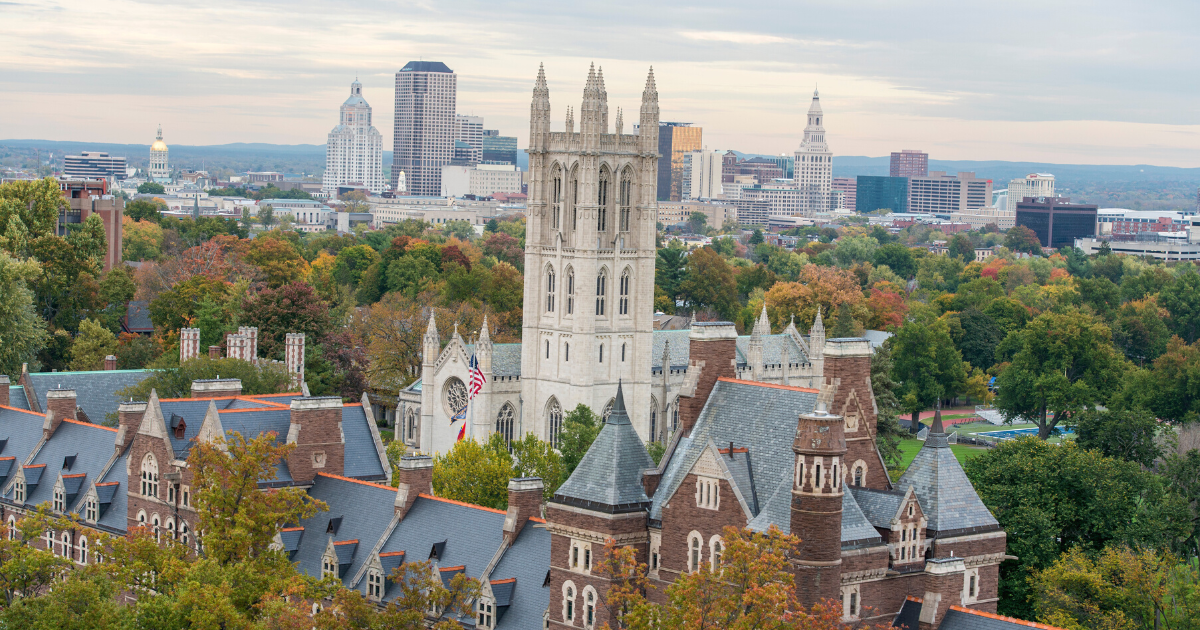How to Apply to Trinity College for Fall 2026 & January 2027 Intake

How to Apply to Trinity College: If you’re planning to study in the US and want to aim for a top liberal arts college, then getting set for your application to Trinity College is a smart move. Whether you’re targeting Fall 2026 entry or considering a January 2027 (Spring) start, knowing the process, deadlines and requirements well ahead of time will give you an edge. In this guide I’ll walk you through what Trinity looks for, how to prepare your application, and what international students especially need to focus on, so you can submit a strong, polished file and maximise your chances of admission.
Why Choose Trinity College?
Before diving into the “how”, let’s talk about the “why.” Trinity College, located at 300 Summit Street, Hartford, Connecticut, is a selective liberal arts institution that emphasises personalized education. Their admissions process shows that they care not only about grades, but about who you are and how you might contribute.
For international students, Trinity explicitly states that they are committed to fostering a global community and meeting full demonstrated need for those admitted.
So if you’re an Indian student (or from elsewhere) preparing now for 2026-2027, you need to approach your application with both your academic credentials and your story in mind.
Understanding the Intakes: Fall 2026 vs January 2027 (Spring)
Fall 2026 Intake
- This is the main intake for new first-year students. According to Trinity’s academic calendar and admission pages, if you want to begin in the fall semester you should aim to have your application submitted by their regular decision deadline (for 2025 for example it was January 15) so decisions come by early April.
- For international students the financial-aid deadlines are also tied to that cycle: Early Decision I, Early Decision II, Regular Decision all have dates like November 15, January 15, etc.
- In other words, for Fall 2026 you should be ready to apply in the late 2025 / very early 2026 window, and have your documentation, test scores, essays etc ready ahead of time.
January 2027 Intake (Spring)
- Some colleges allow a spring entry, though for Trinity the main first-year entry is fall. However, for certain programmes or “IDP for adult learners” (non-traditional students) Trinity explicitly states a Spring (fall term admissions vs spring term admissions) schedule: e.g., Spring Term Admissions for IDP must complete application by November 1 for Spring entry.
- Therefore if you are seeking January / Spring 2027 start, you should be very clear about whether you are applying as a regular first-year or as a non-traditional / adult learner or transfer student.
- For first-years wanting Spring entry, the process may be more limited; you’ll want to speak to the admissions office to confirm whether they accept Spring starts and how many places are available. For safety, aim early (by November 2026) for the Spring session.
Step-by-Step Application Process for First-Year International Applicants

Here’s a detailed roadmap for how to apply to Trinity for Fall 2026 or Spring 2027:
1. Choose your term and prepare your timeline
- Decide whether you are aiming for Fall 2026 (preferred) or Spring/January 2027.
- For Fall: Target application submission by January 15, decision by early April.
- For Spring: Target application submission by November 1 (or as early as possible) for Spring entry.
- Work backwards from the deadline to ensure you complete: school transcripts, English-proficiency test, letters of recommendation, application essays, finances, visa preparation.
2. Meet the academic & eligibility requirements
- Trinity uses the Common Application for first-year applicants.
- Official transcript(s) in English from your school; if non-English must provide certified translation.
- Recommendation: Trinity requires one academic recommendation for undergraduates.
- English Proficiency: International applicants must demonstrate proficiency via a recognised test (TOEFL, IELTS, Duolingo).
- Financial documentation: For those applying for aid, a CSS Profile is required.
3. Work on your application materials
- Personal essay / Common App essay: Make it personal, reflective, and show why Trinity.
- Supplemental essay (optional): Trinity offers an optional essay: “What is an aspect of your background that you are excited to share and/or explore as a member of the Trinity community and why?”
- Extracurriculars & leadership: Trinity values students who will contribute to campus community.
- Polish your file: Make sure transcripts, translations, letters of recommendation are ready well before deadline.
- Application fee: $65 non-refundable for first-year applicants via Common App.
4. Submit your application & monitor deadlines
- Submit via Common Application, including all required components.
- International students: make sure to fulfil English test and financial aid documentation by appropriate deadlines.
- After submission: Track your applicant portal for status, additional requests for documents.
5. After admission decision
- If admitted: Accept your offer and submit required deposit by Trinity’s deadline (often May 1 for fall).
- Apply for student visa (F-1) once you receive your I-20.
- Prepare travel, housing, orientation.
- For Spring entrants: ensure you check arrival dates, move-in schedules (for example Trinity’s spring move-in is in mid-January).
International Students: Key Considerations
English Proficiency & Standardised Testing
- Trinity accepts TOEFL, IELTS, Duolingo tests for English proficiency.
- Note: Trinity is test-optional for SAT/ACT for first-years in some years.
Financial Aid and Scholarships
- Trinity states that for admitted international students they are committed to meeting full, demonstrated need.
- International applicants must indicate intention to apply for aid on the application and complete CSS Profile.
- Start gathering financial documentation early (bank statements, affidavits etc).
Visa & Arrival
- Once admitted, you’ll receive I-20 for F-1 visa.
- Monitor move-in dates: For example, for Spring semester Trinity lists move-in January 18 or 19.
- Prepare travel, housing and health insurance, and arrival quarantine (if applicable).
Choosing Spring vs Fall
- Fall offers more comprehensive orientation and cohort.
- Spring entry may have fewer spots and limited programme choice — ensure the programme you want is available for Spring.
- If English test scores or transcripts will only be ready later, Spring might be viable — but confirm with admissions.
Sample Timeline for an Indian Student Applying for Fall 2026
Here’s a suggested timeline you can follow:
| Month | Action |
|---|---|
| Jan – Mar 2025 | Research programmes at Trinity; visit campus virtually; narrow down major. |
| Apr – Jun 2025 | Take English proficiency test (TOEFL/IELTS/Duolingo) if needed; gather transcripts; start drafting essays. |
| Jul – Sept 2025 | Finalise essay; ask teachers for recommendation; translate transcripts if needed. |
| Oct – Nov 2025 | Complete Common Application; pay application fee; submit by early December if possible. |
| Jan 15 2026 | Regular Decision deadline for Fall 2026. |
| Mar – Apr 2026 | Receive admission decision; compare offers; apply for visa. |
| May 1 2026 | Accept offer and pay deposit. |
| Aug – Sept 2026 | Move to campus, attend orientation, begin classes. |
For Spring 2027, shift the timeline roughly 6-8 months later and aim to apply by November 2026 for January start.
What to Highlight in Your Application to Stand Out
- Academic rigour: Show that you challenged yourself (advanced courses, strong grades).
- Your story: What makes you unique? What perspectives will you bring to Trinity’s community?
- Fit with Trinity: Why Trinity? How will you contribute? Use the supplemental essay opportunity.
- Global mindset: As an international student, show how you will engage with the campus and beyond.
- Leadership & initiative: Trinity values students who are active and engaged.
- Languages & culture: If you have bilingual skills or multicultural experiences, mention them.
- Clear career plans: Even as a liberal arts school, show purpose in what you hope to achieve.
FAQs about Applying to Trinity College
Here are some frequently asked questions you might include – feel free to refine:
Q1. Can I apply for Spring (January) 2027 entry at Trinity College?
A. Yes, for certain programmes and for adult/transfer students the college offers spring entry. For first-year students the Fall intake is standard. If you are aiming for January 2027, contact the admissions office early to confirm availability.
Q2. What is the application deadline for Fall 2026?
A. For first-year applicants, the regular decision deadline is around January 15, 2026 (based on past years). Submit early for best consideration.
Q3. What documents do international applicants need?
A. Official transcripts (with certified translation if not in English), English proficiency test score, one academic recommendation, Common Application essay, supplemental essay (optional), financial documentation if applying for aid.
Q4. Does Trinity College waive the application fee for international students?
A. The standard fee for first-year applications is $65. Fee waivers may exist for first-generation college students in the US; international applicants should check with the admissions office.
Q5. Is the SAT or ACT required?
A. Trinity has a test-optional policy for SAT/ACT for first-year applicants for certain entry years. International students should confirm the current policy.
Q6. How strong are my English proficiency test scores expected to be?
A. Trinity expects international applicants to demonstrate English proficiency via TOEFL, IELTS or Duolingo. Scores depend on your national context — contact admissions for detailed minimums.
Q7. What is the financial aid process for international students?
A. Indicate your intent to apply for aid on the application. Then complete the CSS Profile and other documentation by the deadlines (e.g., for First-Years: Early Decision 1 – Nov 15, Early Decision 2 – Jan 15, Regular Decision – Jan 15).
Q8. When should I apply for the visa?
A. Once admitted and you receive your I-20, you should apply for F-1 visa. Complete this process several months ahead so you are ready for your orientation/move-in date.
Q9. Does Trinity accept Spring semester entrants (January intake)?
A. Primarily Fall intake is standard for first-year students. Some non-traditional programmes allow Spring entry (application deadline for Spring may be around November 1).
Q10. What if my transcripts are not in English?
A. You must provide a certified translation along with the original document. Transcripts must be official.
Final Thoughts
Applying to Trinity College is a significant step. By targeting the Fall 2026 intake (or January 2027 if applicable), you’re putting yourself in a strong position. Make sure you begin early, plan your timeline, craft thoughtful essays, and align your materials for Trinity’s holistic admission process.
As an international applicant, pay particular attention to English proficiency, financial documentation, and the story you tell in your application. With preparation and authenticity, you can put forward an application that not only meets the criteria, but stands out.
Best of luck with your application journey — may your name be on the “Welcome to Trinity” list soon!
SOP for Trinity College – Expert Help for Fall 2026 & January 2027
Planning to apply for Trinity College Fall 2026 or January 2027 intake? Your Statement of Purpose (SOP) plays a key role in securing admission. A well-written SOP for Trinity College should clearly highlight your academic background, career vision, and why you’re an excellent fit for your chosen program.
If you want a professionally written SOP tailored to Trinity’s expectations, connect with our experts at sopwriteronline.com — trusted by 20,000+ students globally. We create custom, plagiarism-free SOPs that enhance your admission chances.
📞 WhatsApp us at +91 7983630647 or visit www.sopwriteronline.com to get started today.
Also Read: SOP for USA













Post Comment